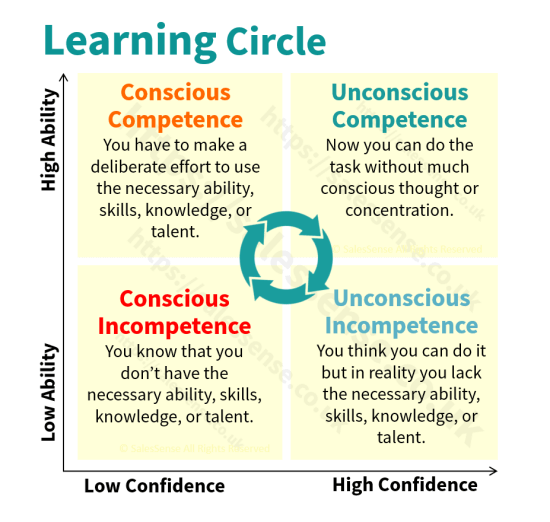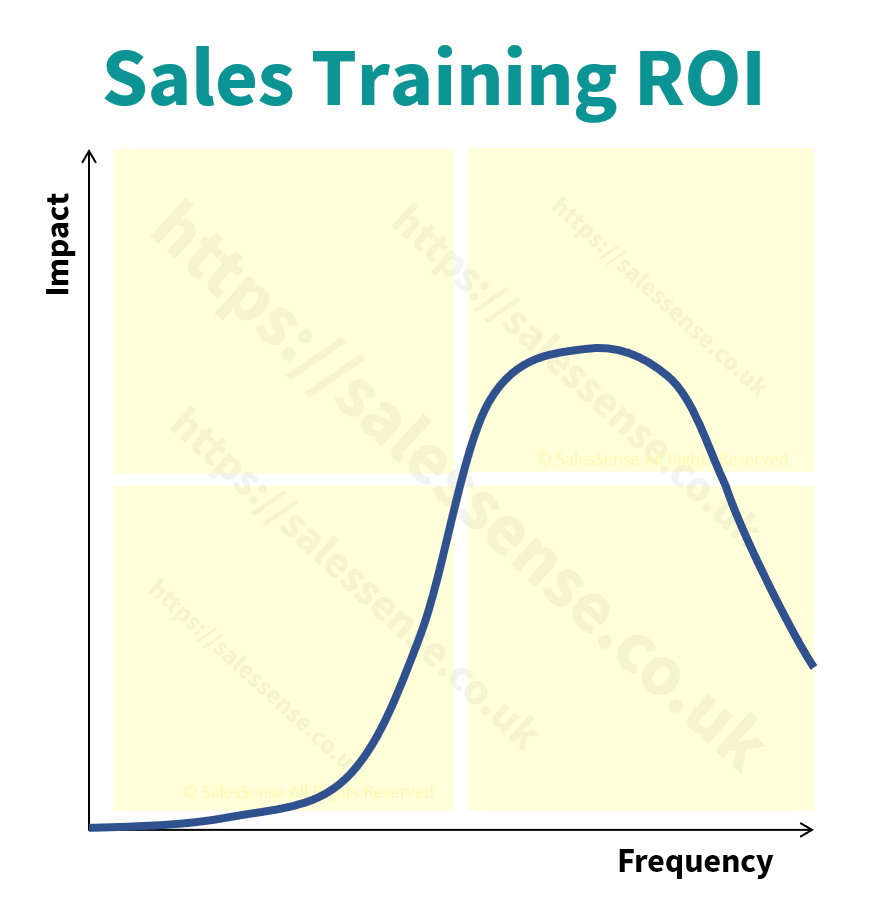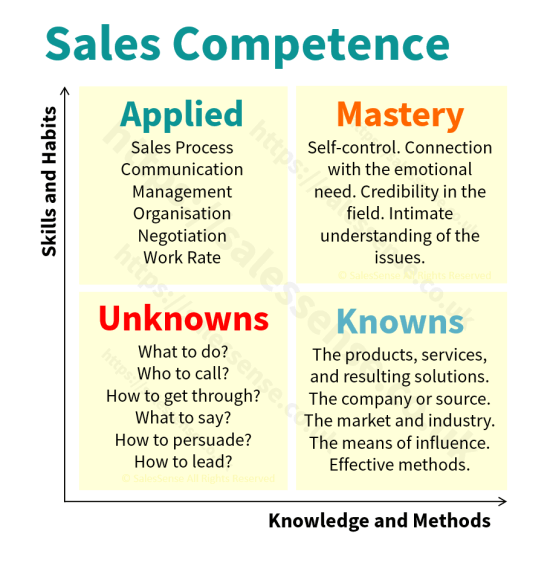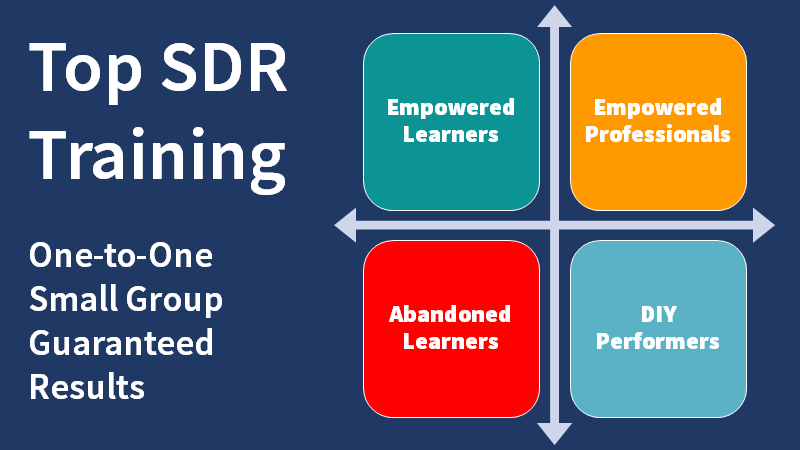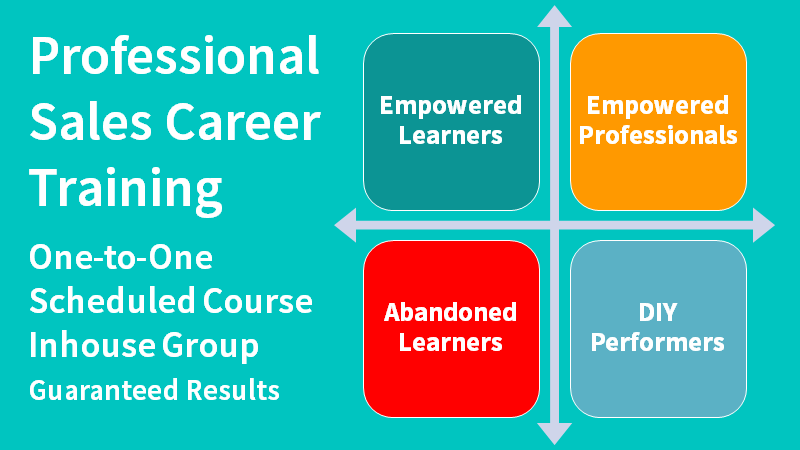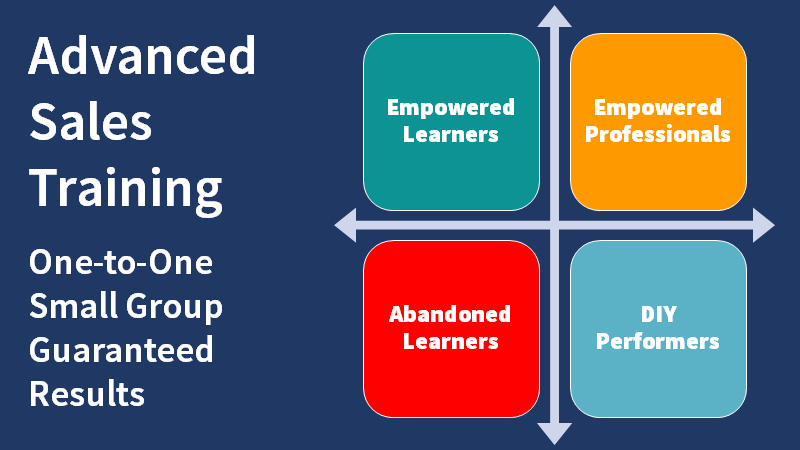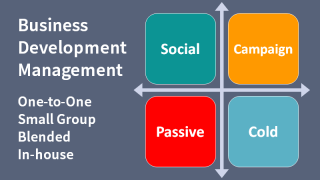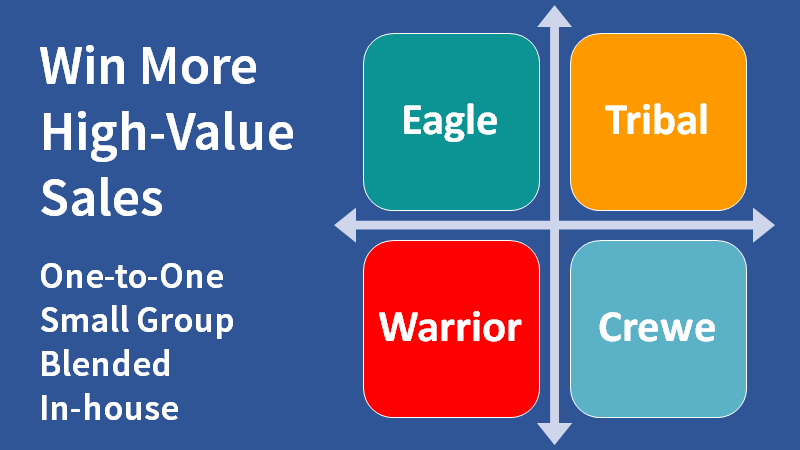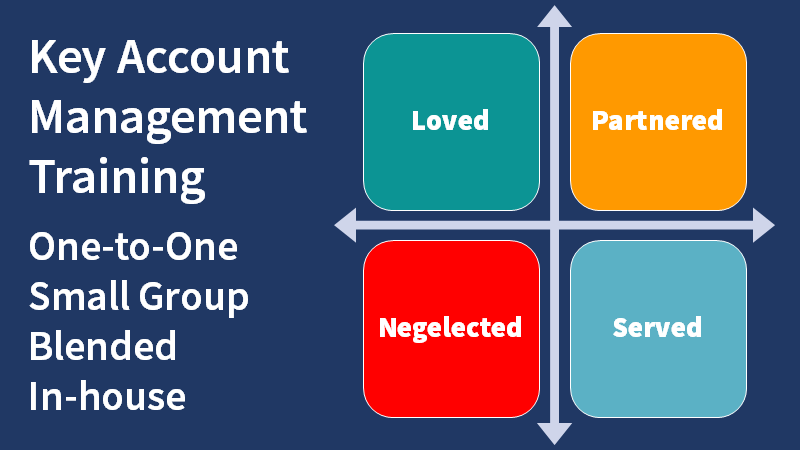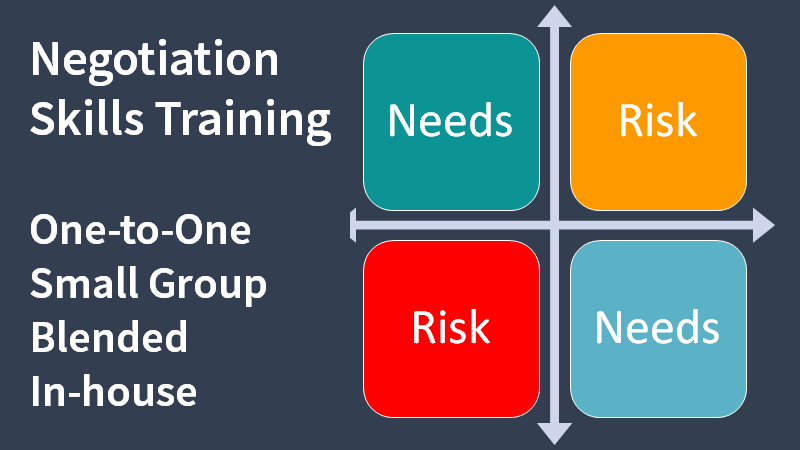Seventeen compelling reasons for investing in the best sales training courses.
Sales trainers are often asked to justify why a business should pay for sales training. This article presents 17 compelling reasons for treating a sales course as an investment. The best sales training course generates a short-term return on its cost. All ambitious companies and organisations should use sales training courses as part of their go-to-market strategy. Whether you are the sole salesperson for a small company, a business owner, or a manager in a larger organisation, regular focused sales training should be part of your target achievement plan.
What are the best sales training courses?
Alignment: The best sales course is closely aligned with the customer's sales process. Ideally, training is created after conducting a thorough training needs analysis.
Training Needs Analysis: The participants likely have the best perspective and understanding of their needs so TNA should include the salespeople who will take the training as well as the managers who lead the teams. Using a combination of structured assessments and one-to-one interviews conducted by a neutral party yields the most useful TNA data.
Bespoke Design: The TNA results should be used to design bespoke training that promotes the desired changes in practices and skill improvements. Key elements of the resulting training should be tested by sharing it with a selected subgroup of participants and managers.
Communication: Participants need to know why they are being asked to take the training and what they will be expected to do differently as a result. So it is essential to communicate, in advance, the changes in methods, practices and behaviours that are expected to result from the training.
Proof: The training needs to prove or demonstrate the value of the changes advocated and provide the participants with an opportunity to try out new skills, methods, and techniques in a safe environment.
Follow-up: Post-training, management must establish and monitor relevant key performance indicators. They must create opportunities for their teams to review learning, study the results of applying it in the field, and facilitate adjustments to maintain or increase effectiveness.
Why invest in regular sales training?
1. The Best Sales Courses Increase Sales
Sales training should pay for itself. For training to be an investment, organisations must treat it as such by deciding how behaviour and practices must change. When this is done, the impact of the training can be measured. After attending a sales course, managers must identify follow-through actions and ensure they happen. Businesses that plan sales training as an investment, realise the benefits. When the follow-through is left to the participants, the results will be mixed.
2. The Right Training Creates New and Expanded Capabilities
Sales training courses should equip recipients with new knowledge, tools for using the knowledge, and an implementation plan. New skills are not established in a short training course. Skills must be developed over an extended period. Implementation plans should include ongoing skill development. Training can give people knowledge of new or better ways to do things. Yet it is what happens after training that determines results.
3. SalesCourses are Cauldrons for New Ideas
While a sales course should provide new ideas, much of the process is for stimulating new thinking among the participants. People are much more receptive to their own ideas than those of others. New relevant ideas will flow from new thinking introduced during the course. New ideas drive innovation, which in turn drives sales and customer satisfaction.
4. Sales Courses Boost Confidence
Confidence is key in selling and an increase in confidence stemming from learning and development will have a powerful impact on results. Confidence is rooted in know-how. Self-confidence is increased when people know how to do things that reliably bring results. When sales training is preceded by sufficient preparation and the proposed changes are properly justified, the time can be used to experience the changes and begin adopting them.
5. Good Sales Training Improves Motivation
A motivated sales force is vital for any company. The sales process flows when salespeople are engaged and motivated. Investing in sales courses increases revenue. The increased earnings associated with overperformance fuel motivation. Increased motivation also reduces sickness and absenteeism. It increases the time that salespeople spend focused on their primary tasks.
6. The Best Sales Training Courses Increase Staff Retention
The cost of employee churn is enormous and nowhere is this more accentuated than for salespeople. Churn in sales staff occurs for two reasons, dissatisfaction and poor performance. I once calculated the cost of a sales hiring mistake. When I included the missed opportunity cost, the bottom line impact amounted to more than ten times the base salary.
Ask and I will send you the calculations.
Losing embedded knowledge and the costs of recruiting new salespeople dwarf sales training costs. Research shows that well-trained salespeople stay for longer. If you invest in your salespeople, they will invest more of their time in your business.
7. Regular Sales Training Develops Competitive Advantage
Are your competitors training their salespeople? If they are, you are at a disadvantage. New thinking, methods and techniques learned from sales courses create a selling advantage. Competitive advantages are hard to acquire in the best of times. Sales training is a fantastic and low-cost way of forging ahead. "The only source of competitive advantage is to get better faster than your competitors." wrote Tom Peters.
8. Training Increases Sales Knowledge and Technical Competencies
Some individuals are naturally fantastic advocates of your product. Others have to learn this skill and work at it. By employing a trainer, you increase people's technical competencies. This has the effect of raising the bar at the top level and raising the lowest common denominator at the bottom. A technical competency improvement may only lift top performers by a small margin yet it can drive a 20 to 30% boost for lower performers.
9. Investment in Training Decreases the Cost of Sale
Moving away from the increases temporarily, all companies need to control costs. Sales training courses can be used to improve processes and iron out inefficiencies. By training salespeople, you increase the average yield per salesperson. This decreases the cost of generating each sale. In my time as a sales manager, each team was measured using our expenses over revenue ratio. This was an easy way to compare the sales efficiency of each team.
10. Two Plus Two Can Be Five
The team dynamic is vital in an organisation that sells. Engaging in a training program strengthens bonds and improves the flow of information within the team. It also helps people to learn and grow together, and builds commonalities, allowing deeper absorption of the training within the organisation. The team that trains together wins together.
11. The Best Sales Courses Increase Professionalism
Selling is an essential capability in any economy. Nothing can happen if customers don't buy. Thus selling must be treated as a professional occupation rather than the problem child, as it so often is. Effective training is a big step towards fostering that professionalism. Training on one level makes the recipient feel more professional about his or her role. On another level, it sends a message to the trainees that selling is something to be taken very seriously and worked on continuously.
12. New Solutions Improve Efficiency
Sometimes the simplest ideas produce the greatest results. Small things can have a large impact. While leading a team in the 1990s, when we were all still in the office, I took to writing up the anticipated sales on a whiteboard as we approached the quarter's end. It galvanised action around our priorities and kept us closing business right up to the last working hour of the last day of each quarter. I can't recall missing a quarterly sales target after I started this practice. The greatest win of a sales training course can be the realisation that an old practice needs to change. I often pose these three questions as an exercise, in courses:
- What are you doing that you should stop doing or do less of?
- What are you doing that you should do more of?
- What are you not doing that you should start doing?
13. The Best Sales Training Increases Customer Satisfaction
According to many surveys, poor customer service is the number one reason why customers change suppliers.
If you want your staff to treat customers better, treat your staff better. Training is one of the things that communicates caring. Courses can be used to improve customer communication, account management, and outreach frequency.
Without customers, there can be no company, and without new customers, there can be no growth. No business survives for long without repeat business, so anything that improves customer satisfaction is money in the bank.
14. Use Training to Improve Structure and Process
The value of having a sales process has been widely established. See some examples here. Process and governance need not be imposed as hard and fast rules. It can be presented as guidelines or a framework. It should represent the best-known and proven way of doing something, such as winning and onboarding a new customer.
The salespeople must learn to sell within defined parameters and must not undermine the company's offering by "going off the reservation". This is especially beneficial when someone new arrives. Good sales training will give an outline structure that allows visibility and consistency, making the process easier to manage.
15. Increased Ambition Leads to Higher Performance
Often before undergoing a sales course many are unaware of their potential and handicapped by their beliefs. Properly delivered a sales training course will sow seeds of ambition and raise the ceiling of what can be achieved. Belief is a key component in success; increased realistic beliefs will raise the ambition levels of your people and push them to achieve more for themselves and deliver more for the company.
16. Use Training to Adjust Company Culture
Culture is set, knowingly or unknowingly, by an organisation's leaders and policymakers. Investing in regular sales training is a powerful means of communicating culture. Sales training course selection, trainer selection, communication of the objectives, management participation and follow-through are all ways to influence company culture.
17. The Best Sales Course Increases Collective Responsibility
Salespeople are often left out of the decision-making process. Isolation creates entrenched attitudes. Too often, the people selling have preconceived ideas about other areas of the business. The preparation that precedes the best sales training courses exposes such weaknesses and creates an opportunity to address them. Salespeople should be consulted on the content of the training. They are best placed to know what they need. Ideal training is preceded by thorough investigation and treated as a long-term project that receives continuous attention, long after initial interventions.
Sales Training Through Co-Creation
Return on Investment
Just take a small recap of the above 17 points. If you were asked to pay £100 to achieve just one of the above benefits with just one of your people, would you consider it money well spent? Achieving all 17 of the above benefits is a huge win, and it is possible with the right training and trainer.
Next time you consider the cost of training, divide the sum involved by 17 (for each of the points above) and then by the number attending the training. You will see exactly how small an uplift is needed to guarantee a return on your investment.
Visit this page for a method to calculate the value of sales training in your selling environment:
How to Prove that Sales Training is Worth the Investment
About this Article
In writing this article, I have drawn on my experience working on both sides of the fence, as a manager leading a large sales team and as a trainer working to maximise the return for customer training investments. Sales training is essential for all of the reasons outlined above and should never be viewed as a cost but rather as an investment. Return on investment is easily achieved when the training is well prepared, delivered effectively and followed up. What is the best sales training course? One that aligns most closely with the learning objectives and drives post-training behavioural change.
Article by Clive Miller
If you are looking for the best sales training course, explore our index here. The best sales courses are designed for your sales environment. Let's speak to explore our alignment, Telephone +44 (0)1392 851500. We will be pleased to learn about your needs and discuss the best fit. Alternatively, email custserv@salessense.co.uk for a prompt reply or use the contact form here.
